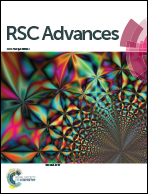Keloid collagen–cell interactions: structural and functional perspective
Abstract
Keloids are a benign dermal proliferative disorder characterised by dense fibrotic tissue developing due to abnormal wound healing. Clinically, keloids extend beyond the margin of the original wound, do not undergo spontaneous regression and also recur after excision. The biochemical and cellular composition of keloids largely differ from that of normal dermis and mature scars plaguing physicians and patients for several decades. Keloids are rich in densely packed fibrillar collagen paralleled by up regulation of fibrogenic cytokines and growth factors. Adhesion of cells to the extracellular matrix (ECM) is a fundamental process during the formation and maintenance of animal tissue and therefore, aberrant cell–ECM interactions result in a number of diseases. There are numerous reports on the signalling mechanisms responsible for excessive production of collagen in keloids. However, the structure–function correlation of collagen fibres in keloids is not understood properly. This paper is the first report towards the understanding of the influence of keloid collagen on the behaviour of fibroblasts with reference to cell adhesion, spreading and growth that translates the adhesion mediated signalling response in keloid pathogenesis. Cells grown on normal collagen were well spread, adhered and proliferated while those on keloid collagen exhibited weak cell–matrix interactions and hence exhibited a lower degree of proliferation. The differences observed in the cell behaviour could be attributed to the altered structural and thermal properties of the keloid collagen.


 Please wait while we load your content...
Please wait while we load your content...